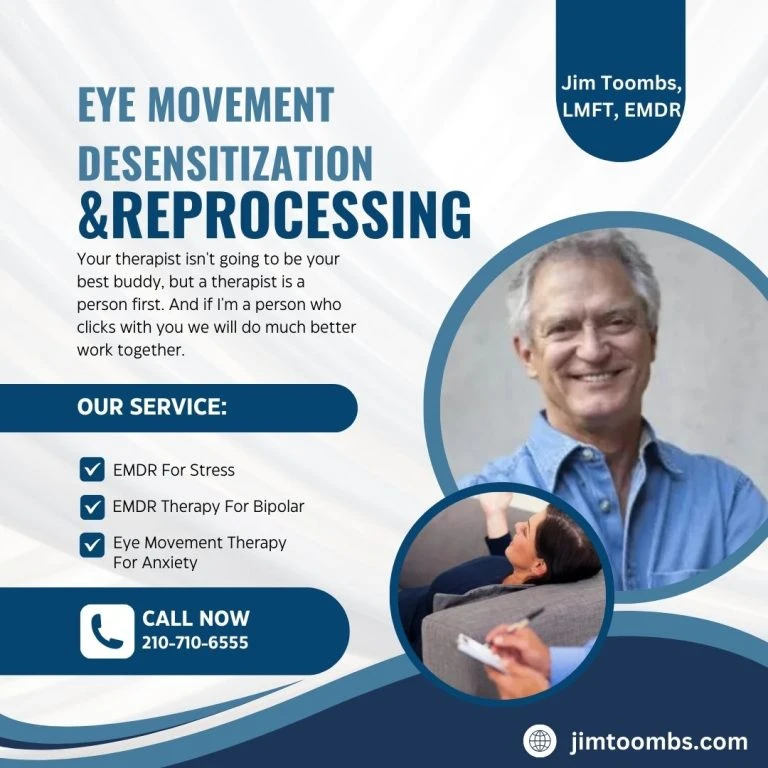l:-
Eye movement desensitization and reprocessing (EMDR) therapy is a form of psychotherapy that has gained significant recognition in recent years. Initially developed to treat post-traumatic stress disorder (PTSD), EMDR has shown effectiveness in addressing a wider range of mental health challenges. This article explores EMDR therapy, its core principles, its treatment process, and the potential benefits it offers.
Understanding Trauma and its Impact
Trauma refers to a deeply disturbing or distressing experience that overwhelms a person\'s ability to cope. Traumatic events can range from major life incidents like accidents, assaults, or natural disasters to more subtle experiences of neglect or abuse. The impact of trauma can linger long after the event itself, manifesting in symptoms like:
- Flashbacks: Vivid and intrusive memories of the traumatic event
- Nightmares: Disturbing dreams related to the trauma
- Avoidance: Avoiding people, places, or situations associated with the trauma
- Hyperarousal: Increased alertness, anxiety, and difficulty relaxing
- Negative thoughts and beliefs: Feeling worthless, ashamed, or guilty about the trauma
These symptoms can significantly impair a person\'s daily life and emotional well-being. Traditional talk therapy approaches often involve revisiting the traumatic memories in detail, which can be re-traumatizing for some individuals.
EMDR Therapy: A Different Approach
EMDR therapy offers a unique approach to healing from trauma. Unlike traditional talk therapy, it doesn\'t require extensive retelling of the traumatic event. Instead, EMDR focuses on processing the disturbing emotions and physical sensations associated with the memory.
The core principle of EMDR lies in bilateral stimulation, which involves stimulating the brain in a back-and-forth way. This can be achieved through various methods:
- Therapist-directed eye movements: The therapist guides the client to follow their hand moving rhythmically from side to side.
- Tapping: The therapist taps on the client\'s hands alternately, right and left.
- Auditory stimulation: The client listens to headphones with alternating clicks or tones in each ear.
While focusing on the bilateral stimulation, the client briefly attends to the traumatic memory, associated emotions, thoughts, and physical sensations. The therapist then helps the client identify a more positive belief about themselves related to the experience.
The EMDR Therapy Process
EMDR therapy typically follows a structured, three-phase approach:
- Phase 1: History Taking and Resource Development
- The therapist gathers information about the client\'s history, including the traumatic event and current symptoms.
- They then help the client identify coping mechanisms and develop internal resources, such as feelings of safety and calmness, to manage intense emotions during therapy.
- Phase 2: Processing
- This phase focuses on the actual EMDR reprocessing. The therapist guides the client through bilateral stimulation while the client focuses on the traumatic memory, associated emotions, thoughts, and physical sensations.
- They then help the client identify a more positive belief about themselves related to the experience. This process is repeated until the memory is less emotionally charged and the negative thoughts and beliefs are replaced with more adaptive ones.
- Phase 3: Integration and Evaluation
- The therapist helps the client integrate the positive changes experienced in therapy into their daily life.
- They also evaluate progress and address any remaining challenges.
The number of EMDR sessions required can vary depending on the severity of the trauma and the individual\'s progress. However, research suggests that EMDR can be effective in fewer sessions compared to traditional talk therapy approaches.
Benefits of EMDR Therapy
EMDR therapy has been extensively researched and has shown effectiveness in treating a range of mental health conditions, including:
- Post-traumatic stress disorder (PTSD): EMDR is one of the most highly recommended treatments for PTSD by organizations such as the American Psychiatric Association and the World Health Organization.
- Anxiety disorders: EMDR can be helpful in reducing anxiety symptoms associated with phobias, social anxiety, and generalized anxiety disorder.
- Depression: Studies suggest that EMDR can be effective in treating depression, particularly when symptoms are related to traumatic experiences.
- Phobias: EMDR can be used to address specific phobias by helping individuals process the underlying fears and anxieties associated with them.
- Pain management: Emerging research suggests that EMDR may be beneficial in managing chronic pain by addressing the emotional component of pain perception.
Overall, EMDR therapy offers a safe and effective approach to healing from trauma and reducing a variety of mental health symptoms.
Source Url:- https://rb.gy/pssl27


